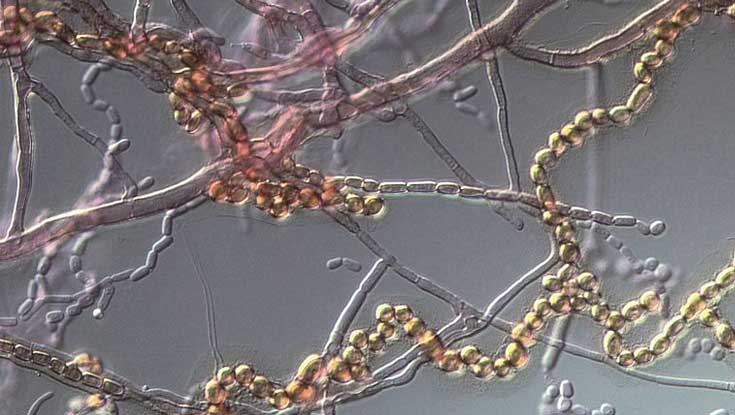- Fungal nail infection - (https://medlineplus.gov/ency/article/001330.htm)
- Onychomycosis - (http://en.wikipedia.org/wiki/Onychomycosis)
About
Toenail fungus or onychomycosis of toenail is a common fungal infection of toenails, often affecting adults. It is also known as dermatophytic onychomycosis or tinea unguium. Toenail fungus is commonly caused by a fungus called Trichophyton rubrum, which belongs to the group of fungi called dermatophytes. Dermatophytic onychomycosis accounts for more than half of all nail diseases and abnormalities.

Toenail fungus commonly occurs following spread of fungal infection from nearby areas especially the toes. This apart, a recently damaged nail due to injury is also highly prone to the fungal infection.
Factors which increase the risk of toenail fungal infections include using public swimming pools, gyms, or shower rooms. Wearing closed footwear for most of the day provide ideal conditions for fungal growth. Medical conditions like diabetes, psoriasis, and poor immunity due to chemotherapy, immuno-supressant therapy or AIDS increase the risk for toenail fungal infections. People who sweat a lot or have moist skin are also prone to develop these infections. Hot, humid or damp climates can also cause fungal infection; hence, fungal infections are common in monsoons.

The common symptoms of a toenail fungal infection include itching, brittleness and change in the shape of the nails wherein the outside edges of nails get crumbled, discoloration of the nail with white, green or yellow streaks and loss of luster or shine in the nails occur. The nails may eventually thicken and loosen off.
Oral antifungal medications such as fluconazole, griseofulvin, terbinafine and itraconazole are usually prescribed depending upon the level of infection. Medicines for topical application like clotrimazole, butenafine, miconazole, ciclopirox (ciclopiroxolamine) or amorolfine are also often prescribed along with oral medicines to treat toenail fungus.
Causes of Toenail Fungal Infection
Dermatophyte fungi are the most common causative organisms for fungal nail infections or onychomycosis. These fungi commonly cause skin and nail diseases in humans and animals. Dermatophytes cause infections of skin, hair and nails because they strive on nutrients from keratinized materials. These organisms usually colonize on keratin tissues to cause inflammation. Dermatophytic onychomycosis accounts for nearly half of all nail diseases and abnormalities.
Other pathogenic fungi including yeasts like Candida and non-dermatophytic molds such as Scytalidium, Scopulariopsis or Aspergillus may also cause toenail infection.

Symptoms of Toenail Fungal Infection
Usual features of toenail fungus include:
- Brittleness and discoloration of the nail with white, green or yellow streaks.

- The outside edges of the nail may start crumbling.
- Rubbish / debris build-up under the nails.
- Thickening and loosening of the nails
- Loss of nail luster resulting in dull nails.
- Pain may be present if the skin underlying the nails is affected.
Diagnosis of Toenail Fungal Infection
Physical examination of the nails itself would confirm a fungal infection. However, the debris remains are usually sent for laboratory culture tests to confirm the causative organism.
Since some bacteria and other types of fungi such as yeasts and molds can also cause nail infections, it is important to find out the exact species of organism that caused the infection. This would help in giving the right medications and the best treatment.
Treatment of Toenail Fungal Infection
Systemic (oral) antifungal medications such as fluconazole, griseofulvin, terbinafine and itraconazole are usually prescribed depending upon the level of infection. Medicines for topical application like clotrimazole, butenafine, miconazole, ciclopirox (ciclopiroxolamine) or amorolfine are also often prescribed along with systemic medicines to treat toenail fungus.

Complications of Toenail Fungal Infection
Complications due to fungal nail infections are common in people with diabetes, or those who have poor immunity, including organ transplant recipients. Diabetics will have a potential risk of developing cellulitis, a dangerous bacterial infection due to nerve and vascular impairment in diabetes. Another rare, but potentially dangerous complication is osteomyelitis or infection of the bone.










